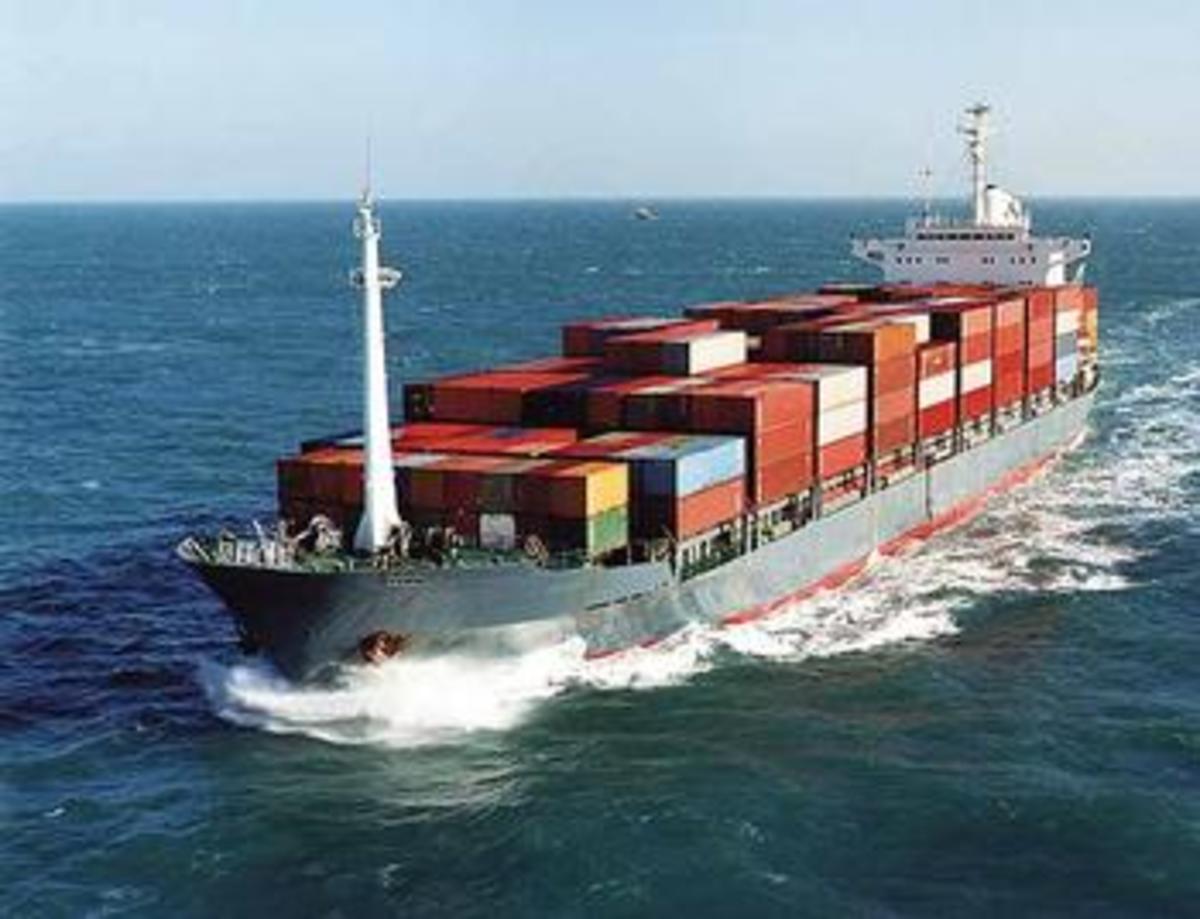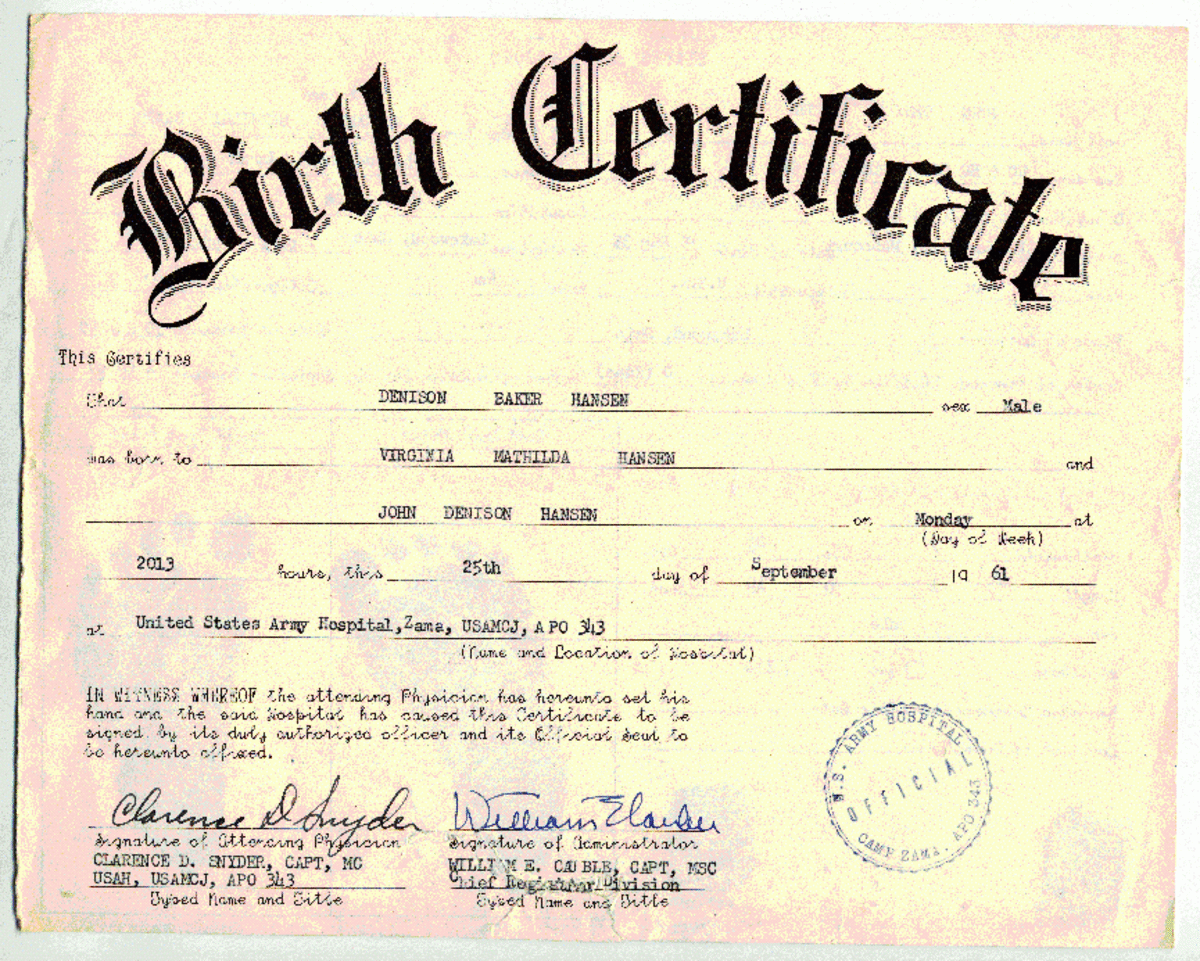Flour as a Weapon?
The Threat
Do you remember where you were on April 19th 1995 at 9:02 AM? Probably not, at least till I tell you the significance of the moment. That was the date and time of the explosion that brought down the Alfred P. Murrah Federal Building in Oklahoma City. Of course you know the story, and how the bombers were caught. One was executed, and the other is spending life in prison and rumors of an additional person or persons involvement were never proven. And while most people probably remember the story, they may be more vague about the bomb itself. Reportedly, it was a mixture of nitrogen fertilizer and some sort of fuel oil all loaded in barrels in the cargo bay of the famed Ryder truck.
Now this combination has been known for years to be explosive. Farmers who needed to blast rock or tree roots out of the way used it when they needed to. Miners and quarry operators also used the mixture in their operations as well. You see, fertilizer and diesel fuel were and still are purchased in large quantities by most agricultural firms and business. And where dynamite sales are regulated, and monitored fertilizer sales weren't at the time and still aren't in small quantities.
But as dangerous as this combination is, another very high powered explosive exists in most kitchens across the nation, and is not regulated, monitored, recorded, or tracked. Why not? Because it is not classified as anything hazardous except from a dietary standpoint.
So what is it? In a word, flour. Or if you want to increase the boom, mix in some confectioner's sugar. Now before you start packing a mixture of these things into pipe bombs, you need to realize that is doesn't blow up that way. Flour, or a flour/sugar combination needs to be dispersed in a volume of air, till it resembles dusty conditions. That will probably be somewhat of a deterrent to potential bomb makers, but the stuff under the right circumstances is still extremely powerful.
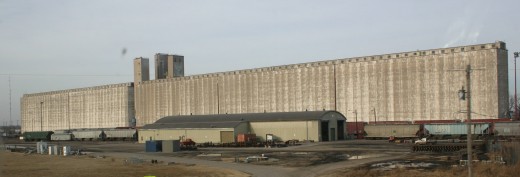
Where it Happened
The picture above is one of the two largest grain storage facilities in the state of Kansas.It was built originally by the Garvey family of Wichita, but was sold back in the nineties to the DeBruce family. Kansas is synonymous with wheat, being the number one producer in the nation, and large elevator/storage places such as these are common there. This particular facility had a sister structure nearby in Hutchinson, Kansas and together these two hold the record for size, being nearly a half mile in length. The silos are over a hundred feet tall, and the capacity is in the millions of bushels.
I first saw the grain complex in 1986 when my employer moved me to Wichita. I worked for a company that dealt in equipment/machinery/maintenance supplies, and the firm was one of our customers. The amount of equipment that goes into one of these things is surprising, and it takes a lot of upkeep to make it run smoothly.
To give you a little better idea about this, it's a little hard to tell, but this monster has three rows of silos, all running the entire two thousand, plus, feet length. Now below the silos, are tunnels, with belt conveyors running to transport grain from point to point. If you look on top, you'll see a narrow structure running the entire length, and this also contains a conveyor system. The tallest point just left of the center is called the head house, and holds a vertical conveyor commonly called a bucket elevator, to lift the grain so it can be moved to a specific silo for storage. Now in addition to the conveyors and elevators, there are a lot of motors, drive systems, controls and bearings. Tons of bearings.
What Happened.
So, you are probably saying, "All this is OK, but you're loosing my interest. What happened?" Well on June 8th 1998, I was working for my employer in downtown Wichita when I heard what I though was a rumble of thunder. It was storm season, and a lot of storms had been going through our area, and since it was somewhat overcast, I thought nothing of it, even though the sound was different from normal thunder. It was from my point, about seven or eight straight line miles from the elevator, sharper and a little more staccato than most thunder rumblings. Also, it ended rather abruptly whereas normal thunder usually dies down more gradually. I was in the business warehouse when this happened, and it was a few minutes before I returned to the office where we had a radio on. I then learned that the elevator had exploded, and the probable cause was from grain dust, which isn't much different than flour.
Aerial view after the explosion
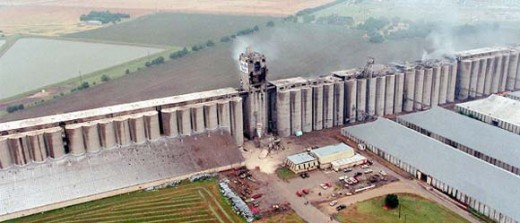
Rescue and investigaton
When emergency teams arrived on the scene, they first were unable to account for thirty employees. That number was quickly whittled down to eighteen, and finally, only seven perished in the accident. It took six weeks to find the remaining bodies, and the complex needed to be nearly completely emptied, including the tunnel beneath. The explosion had destroyed some of the "trapdoors" in the silo bottoms, so efforts to remove the wheat from the tunnels resulted in more pouring through the destroyed openings. Finally, all those suspected to be victims were found, and the focus centered on determining the cause.
It was really not that complicated. In a facility as large as this one, dusty conditions are commonplace, and even though OSHA has requirements for dust filtering systems, it's impossible to keep it clean. As I mentioned before, the tunnel beneath held a conveyor system that ran the entire length of the complex. Nearly a half mile of belt, motors, electrical controls. and bearings. The bearings on this type of belt conveyor are located in the ends of rollers supporting the belt on twelve to eighteen inch spacings. There is a bearing on each end of the roller. That adds up to over 5000 bearings in the tunnel, and it was determined that one of them had jammed. It froze totally, and would not rotate, causing the roller to lock up as well.
The drive, however, continued to run and pulled the belt, laden with grain across the stalled roller. The friction generated in this process caused the roller to become quite warm, and in an environment full of grain dust, between two and three hundred degrees is sufficient to ignite a dust particle that may land on a hot surface. A flash fire followed, and the dust ignited before it could vent causing an explosion. The burst ran the entire length of the tunnel, and blew out both ends, the head house, and the tops on some of the silos. The final body was found in the tunnel.
Destructive power
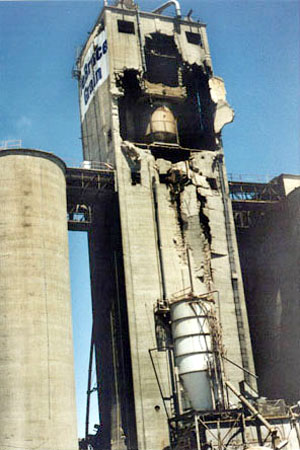
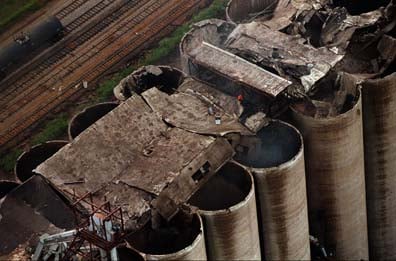
Two ends a half mile apart
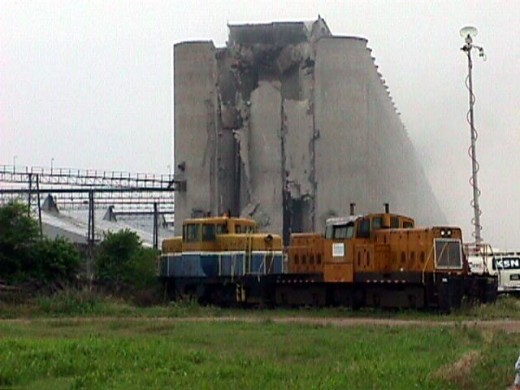
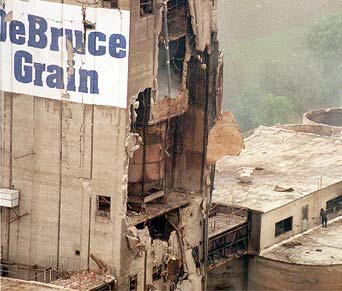
Witness accounts.
The facility had an emergency response team on site, and when they emerged from their office, they noticed pieces of steel reinforced concrete waving around in the air like kites. Debris was scattered everywhere, and people were looking to them for answers. They knew at the time, it would take several weeks to sort out.
An unidentified individual told his story too. He stated he was sitting in his pickup truck nearby, when the explosion happened. He didn't realize at first what was going on, but noticed large amounts of debris raining down around him and hitting his truck. A large electric motor, weighing several hundred pounds landed a few feet away. He came within that few feet of being another victim.
The noise of the explosion could be heard for several miles in all directions. A circular area measuring about twelve miles in diameter and containing over a hundred thousand people was audibly affected.
About two miles to the southwest, sits a plant owned by Vulcan Chemicals. They process surplus saltwater from the regions petroleum business into products such as chlorine, some refrigerants, and typewriter white out. Many of their products are in the hazardous category. Concern for the plant's safety was on the minds of emergency management officials that day as a leak there could have killed or injured hundreds.
Damage
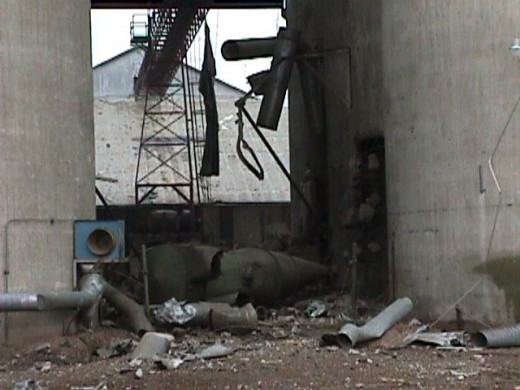
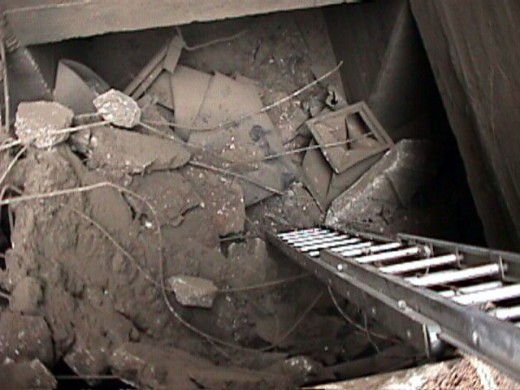
Is Flour a Threat
For as much as estimates can be made, a large quantity of dust was probably involved in the DeBruce Elevator explosion. The theory is that it was likely a series of explosions, with the original touching of the remainder in a chain reaction. It's believed each explosion dispersed sufficient dust to cause another larger one until there was no more fuel.
An argument could be made then, that a few pounds of flour, fortified by powdered sugar in a truck like the bombers used in Oklahoma City could be blown and spread around until it was ignited, resulting in a significant boom. As the pictures here testify, steel reinforced concrete can be destroyed and stories abound of the industrial accidents caused by dust. The terroristic threat is probably neglible but it's intriguing to realize that large purchases of fertilizer would raise eyebrows, but flour and sugar can be bought by the truckload and no one would give it a second thought.
Popular
Does The Jones Act Put Us Under Maritime/Admiralty Law By Our Birth Certificate? Why Is Your Name Spelled In Capitals
Strawman Why Is Your Name In All Capital Letters? I Only Use Caps For The The First Letter Of My Name!
StrawMan Are You A Person Or Collateral? Does Your Social Security Card Prove You Are Property? Why Capital Letters?

